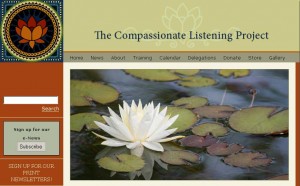Boosting creativity through passion, novelty and pleasure
 I’ve just returned from Chicago, where I had the pleasure to present my program “Rewire Your Brain to Speak Your Mind: Neuroscience Insights for Conflict Management” at the Association of Conflict Resolution Chicago Area Chapter. It was wonderful to connect with other conflict resolution professionals and tap into our collective brain power for new ideas and approaches. Later, I got a chance to catch up with my Chicago friends and attend an amazing skating show – Ice Dreams 2011.
I’ve just returned from Chicago, where I had the pleasure to present my program “Rewire Your Brain to Speak Your Mind: Neuroscience Insights for Conflict Management” at the Association of Conflict Resolution Chicago Area Chapter. It was wonderful to connect with other conflict resolution professionals and tap into our collective brain power for new ideas and approaches. Later, I got a chance to catch up with my Chicago friends and attend an amazing skating show – Ice Dreams 2011.
While the swirl of events from this weekend in Chicago is still fresh in my mind, I am going to anchor my breath-taking and brain-captivating experiences with words as I reflect on how passion, novelty, and pleasure can help us become better solution-finders:
1. Remember to nurture and pursue your life’s passions. Passions have the ability to dissolve fear, doubt, and hesitation. They can give you the voice to speak your truth. And it doesn’t really matter what your passions are as long as they help you embrace your own identity and live your life more fully. Passions can disrupt the perpetual circles of victimhood, blame, and excuses by shifting attention to more pleasant experiences. According to neuro-psychologist Barbara Fredrickson, the author of “Positivity: Groundbreaking Research Reveals How to Embrace the Hidden Strength of Positive Emotions, Overcome Negativity, and Thrive,” positive emotions make us more creative and resourceful. They open the mind to new possibilities and new ways of dealing with old problems. So, get connected to your passions.
2. Expand your synaptic connections through new places, people, and experiences. It will help you keep your brain plastic and able to build new pathways that can translate into new behaviors and new thinking patterns. Exposure to varying cultural experiences and views increases the pool of ideas to draw from and makes people more acceptable of differing opinions. Novelty tends to attract attention and boost cognitive energy. The brain is wired to make sense of the outside world so that we can feel more comfortable in it. Novel information puzzles the brain as it tries figure out how this new piece of information fits into our worldview. The brain is motivated by curiosity and the search for patterns. That’s how we learn. When the brain is busy searching for patterns and making predictions, it produces more neuromodulator dopamine, which is responsible for more pleasurable experience. You can stretch your brain and build up your transformational capacity by introducing small changes to your routine through travel, new activities, and new friends.
3. Nourish your senses and savor your positive emotions. What you feed to your senses has a profound effect on how you perceive the world and make decisions. A recent study, for example, reveals that people stereotype more in disorderly areas than in the clean ones. According to another study, the mere presence of plants in an office setting boosts one’s ability to maintain attention. Beautiful and luxurious experiences create a perfect neurococktail to envelope your brain in a pleasant, dopamine-induced buzz. The feeling of awe is transformative.
Positive psychologists have discovered that one way to increase our well-being is to savor our life experiences. Savoring is a form of mindfulness. According to Fred Bryant, the author of “Savoring,” we can anticipate future events, appreciate the present, or reminisce positively about the past. All three forms of savoring are helpful in producing positive emotions.
Rich sensory experiences that appeal to your eyes, ears, your senses of smell and touch make savoring easy. Find what makes your senses happy and indulge. But remember that people tend to compensate for distress by overindulging. Our willpower and self-control diminish when we are in a bad mood, while our search for pleasure and comfort increases. So, it is better to schedule your harmless infusions of beauty and luxury periodically to cultivate a positive outlook in the long run.
On this note, I am off to reconnect with my positive emotions as I savor the memories of the past weekend, new professional connections, good times with friends, and the immersive experience of dancing lights and music, combined with the mastery, speed, and power of the blades.




